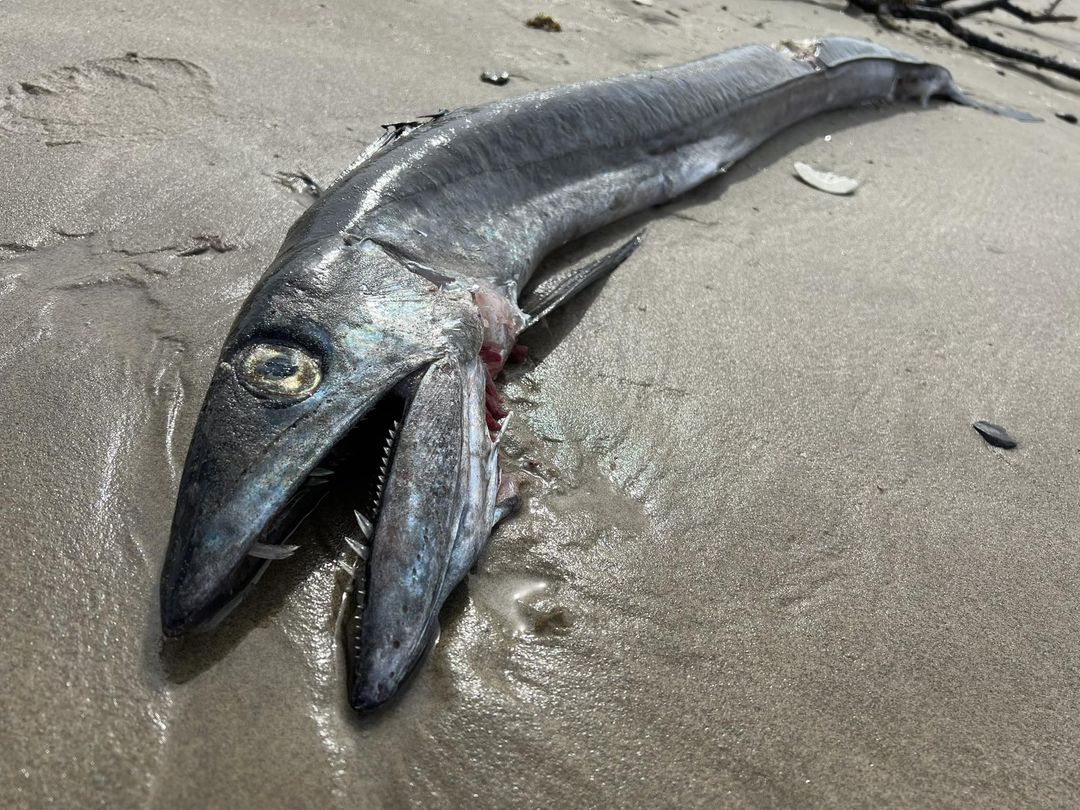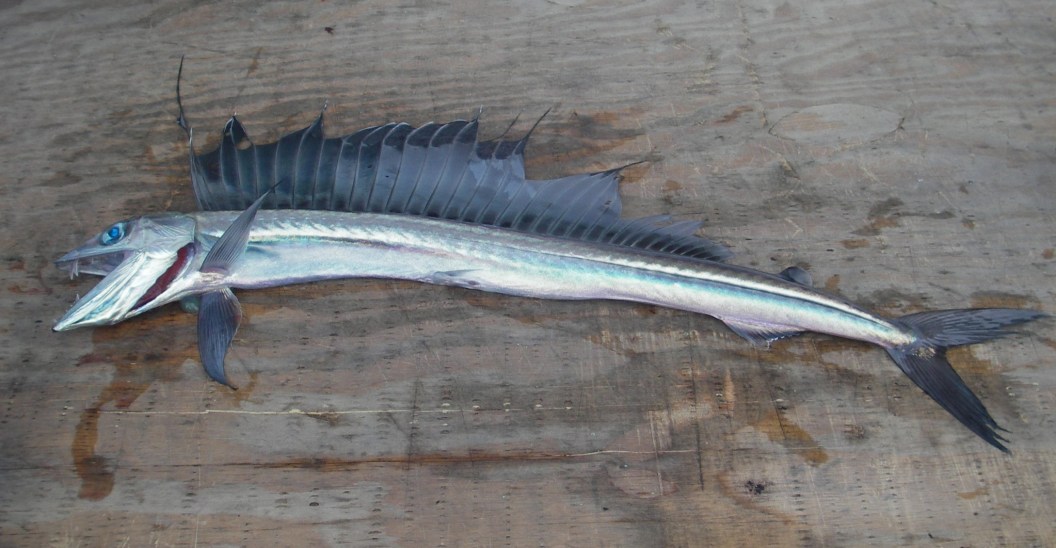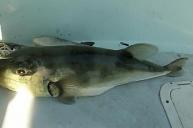Slithery, snake-like, deep-sea fish keep washing ashore along a 200-mile stretch of Oregon's coast, and biologists aren't sure why.
The mysterious sea-dwellers that have been found along a roughly 200-mile stretch of Oregon coastline between Nehalem and Bandon are lancetfish, which typically live roughly a mile below the ocean's surface.
At least one lancetfish was found alive and released back into the ocean, according to officials. Comments from beachgoers on the post indicate that several more have been sighted in various locations along the coastline, including Charleston Harbor, Lincoln City, Gearhart, and Manzanita Beach.
Lancetfish are not rare; they inhabit all of Earth's non-polar oceans. But scientists don't know why they would be in the shallow water near coastline beaches.
It is unusual—so unusual that the Oregon State Parks asked folks on social media to take a photo if they come across the fanged fish, post it online, and tag the agency.
While no officials have offered insight into why this may be happening, theories on social media include everything from climate change, to sound waves created by submarines, to ocean pollution, or it simply being a natural occurrence.
Elan Portner of the Scripps Institution of Oceanography in San Diego has studied lancetfish for more than a decade and told the NY Times that this phenomenon is not new. Lancetfish have washed ashore for at least 300 years and likely longer, he said, adding that no one knows why.
Although they live mainly in tropical and subtropical waters, they migrate as far north as Alaska's Bering Sea to feed, according to the National Oceanic Atmospheric Administration. Since 1982, groundfish surveys by NOAA biologists have located two lancetfish in the Gulf of Alaska, four around the Aleutian Islands, and another 10 in the Eastern Bering Sea.
Lancetfish hunt in the cold, dark area of the ocean referred to as the twilight zone or mesopelagic zone. They are known cannibals but also eat many other fish and invertebrates.
NOAA Pacific Islands Fisheries Science Center (PIFSC) researchers have been studying lancetfish over several years to gain a better understanding of the middle of the marine food web.
"When we look in lancetfish stomachs, their prey is really undigested," PIFSC research oceanographer Phoebe Woodworth-Jefcoats said. "They look almost exactly like the fish you would see swimming around in the ocean."

Oceana Stave/Facebook
The hope is that by tracking the diets of lancetfish, researchers will have a glimpse of how the marine food web is changing over time, including how conditions such as rising ocean temperatures and ocean acidification, or events such as El Niño or La Niña are affecting change.
Many new species descriptions of fish, squids, and octopuses are based on specimens from lancetfish stomachs.




